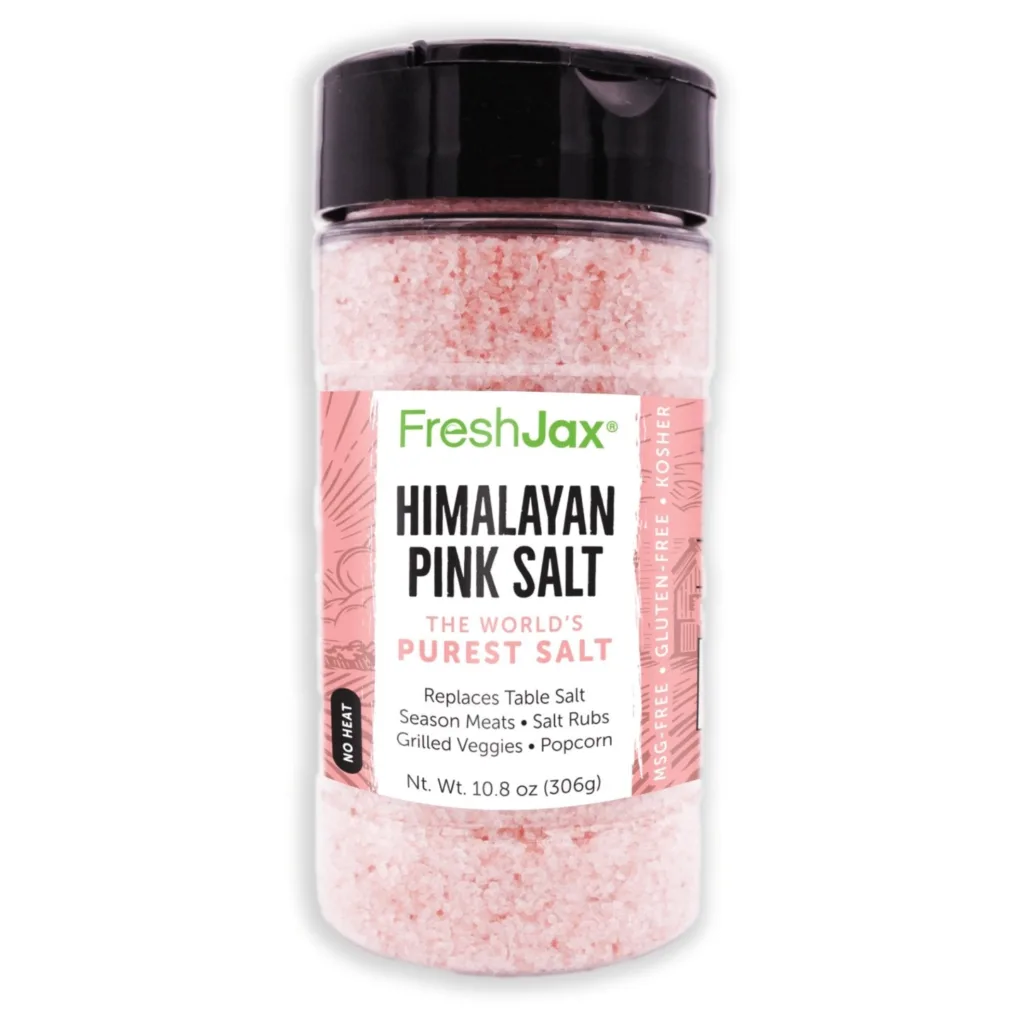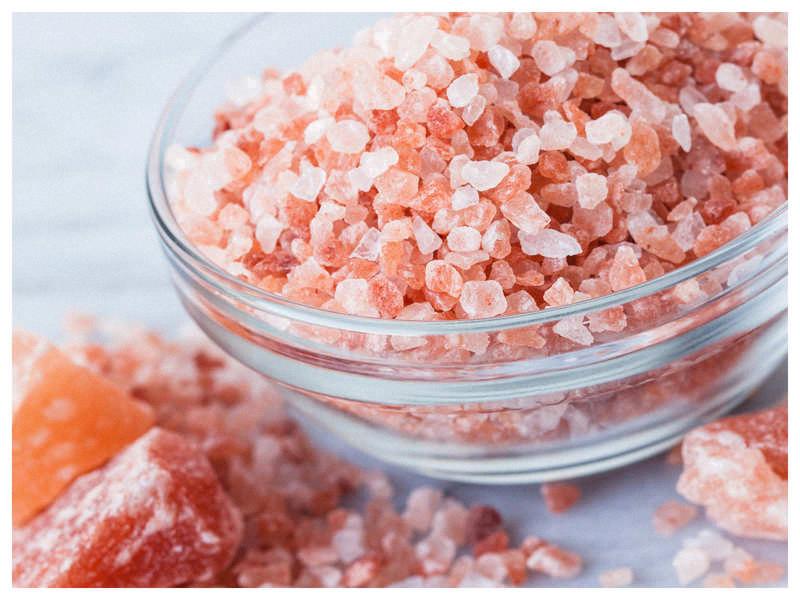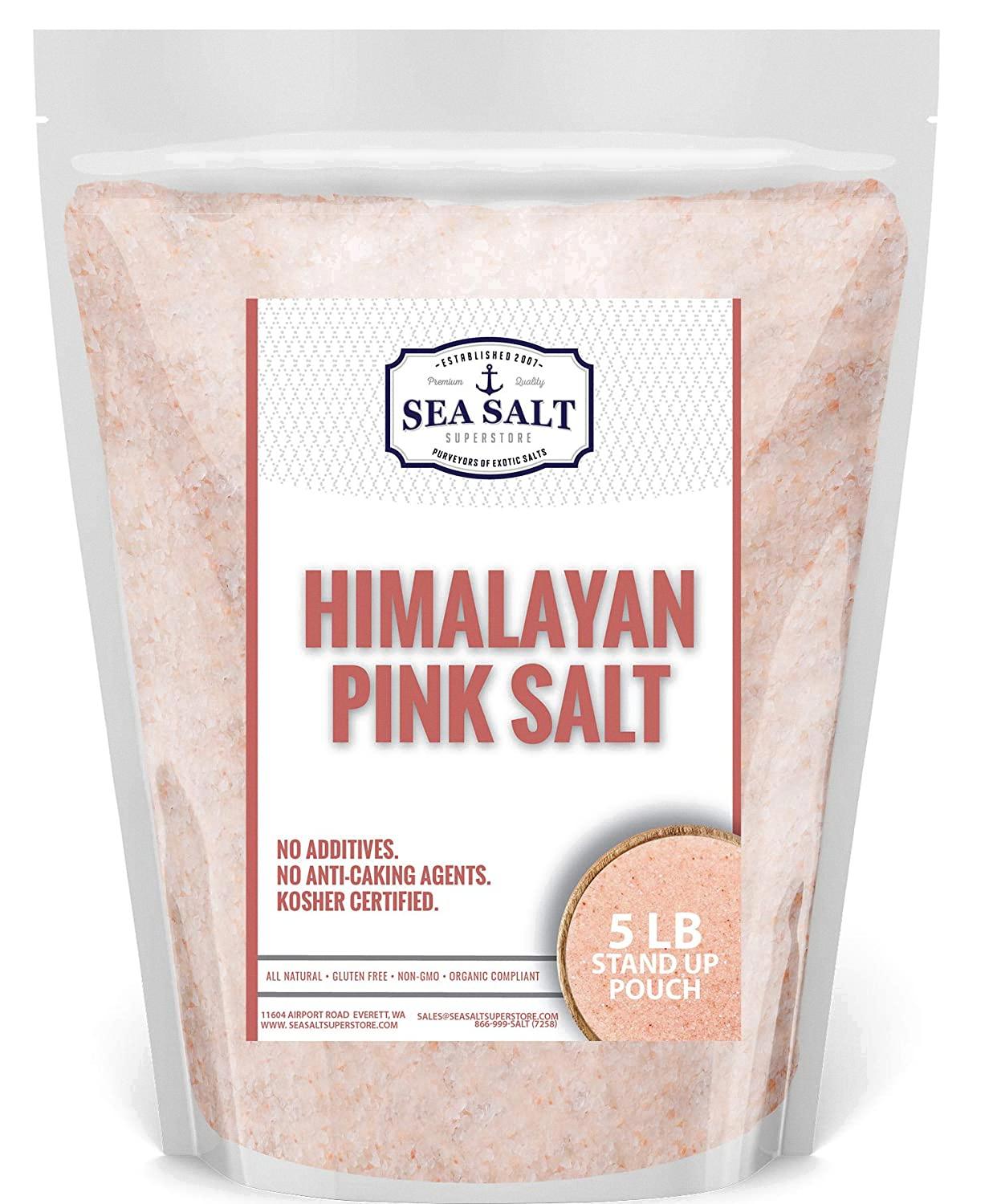Pink Himalayan salt has gained a lot of popularity in recent years for its numerous health benefits. It is a type of rock salt that is mined from the Himalayan region in Pakistan. The salt is believed to be millions of years old and contains several minerals that are not found in regular table salt. One question that many people have is whether pink Himalayan salt contains iodine. In this blog post, we will explore this topic in detail.
Firstly, let’s understand what iodine is and why it is important for our health. Iodine is a mineral that our body needs to synthesize thyroid hormones. These hormones are essential for regulating our metabolism and maintaining healthy organ function. Iodine deficiency can lead to a range of health problems, including goiter, hypothyroidism, and mental retardation in children.
Now, let’s talk about pink Himalayan salt and whether it contains iodine. According to a study published in the Journal of Analytical Science and Technology, the concentration of iodine in pink Himalayan salt is less than 0.1 g. This is a very small amount and is unlikely to provide significant health benefits. However, it is important to note that this concentrated amount of iodine might be considered not harmful to humans, but it is also a risk to the human body if taken in a large amount.
It is also worth noting that iodine content in pink Himalayan salt can vary depending on where it is mined from. Some sources may cntain higher levels of iodine than others. However, the amount of iodine in pink Himalayan salt is not consistent enough to rely on it as a sole source of iodine.
For most people, iodized salt is probably the easiest way to maintain sufficient iodine intake. Iodized salt is regular table salt that has been fortified with iodine. It is widely available and inexpensive. Just one teaspoon of iodized salt provides approximately 50% of the daily recommended intake of iodine.
Pink Himalayan salt does contain iodine, but in very small quantities. It is not a reliable source of iodine and should not be relied upon as the sole source of iodine intake. For most people, iodized salt is the easiest and most effective way to maintain sufficient iodine intake. As with any dietary supplement, it is always best to consult with a healthcare professional before making any significant changes to your diet.
Iodine Content of Himalayan Pink Salt
According to the potentiometric method by spectral analysis, the concentration of iodine in pink Himalayan salt is found to be less than 0.1 grams. This amount of iodine is considered to be relaively low and not harmful to human health when consumed in moderation. However, excessive intake of iodine can pose a risk to the human body, and it is recommended to consume salt in moderation and maintain a balanced diet to avoid any adverse effects on health. It is imperative to note that the iodine content in pink Himalayan salt can vary depending on the source and processing method of the salt.

The Benefits of Himalayan Pink Salt for Thyroid Health
Himalayan pink salt is believed to be good for thyroid health because it contains iodine, a vital element that is required by the body to synthesize thyroid hormones. The thyroid gland is responsible for producing thyroid hormones, whch regulate various bodily functions, including metabolism, body temperature, and energy levels. Iodine deficiency can lead to thyroid problems, such as hypothyroidism, which can cause symptoms like fatigue, weight gain, and depression. Therefore, consuming Himalayan pink salt, which is rich in iodine, may help promote and maintain healthy thyroid function. However, it is important to note that excessive consumption of Himalayan pink salt can be harmful to your health, so it should be consumed in moderation as part of a balanced diet.
Is Pink Himalayan Salt Healthier than Iodized Salt?
The answer to whether pink Himalayan salt is better than iodized salt is not straightforward. Pink Himalayan salt contains several minerals, such as potassium, magnesium, and calcium, that are not present in iodized salt. These minerals give the salt its distinctive pink color and are known to be essential for good health. However, the quantities of these minerals in pink Himalayan salt are very small, and it is unlikely that consuming the salt will provide any significant health benefits.
On the other hand, iodized salt contains iodine, an essential mineral that is not found in pink Himalayan salt. Iodine is important for maintaining a healthy thyroid gland and preventing iodine deficiency disorders, such as goiter. In fact, iodine deficiency is a serious global health concern, and iodized salt is a simple and effective way to prevent it.
Both pink Himalayan salt and iodized salt have their unique properties and benefits. If you are looking to add some variety to your salt intake and prefer the taste of pink Himalayan salt, it is a safe option. However, if you are concerned about iodine deficiency, it is important to use iodized salt to meet your daily iodine requirements. As with any dietary decision, it is alwas best to consult with a healthcare professional before making any changes to your diet.
Which Salt is Best for Thyroid Health?
For individuals with thyroid issues, iodized salt is generally considered the best option. Iodine is an essential mineral that is necessary for the production of thyroid hormones, which regulate metabolism and other bodily functions. Iodized salt is a type of table salt that has been fortified with iodine, making it an easy and convenient way to ensure you are meeting your daily iodine requirements. However, it is important to note that excessive iodine intake can also be harmful to thyroid function, so it is recommended to consult with a healthcare professional to determine the apropriate amount of iodine for your specific needs. Additionally, some individuals may prefer to obtain iodine from dietary sources such as seaweed or seafood.
Which Natural Salt Contains the Highest Amount of Iodine?
Natural salts vary widely in their iodine content, and there is no one salt that can be considered the highest in iodine. However, in general, seawater contins the highest concentration of iodine, and therefore, sea salts derived from seawater tend to have higher levels of iodine compared to other natural salts. However, the amount of iodine in sea salt can still vary depending on the location where the salt was harvested and the processing methods used. It is also important to note that the best dietary source of iodine is iodized salt, which has been fortified with iodine to ensure adequate intake.

Which Salt Contains the Highest Amount of Iodine?
There are different types of salt available in the market, but the salt that contains the highest amount of iodine is iodized salt. Iodized salt is a type of table salt that has been fortified with iodine, a mineral essential for the proper functioning of the thyroid gland. The amount of iodine in iodized salt varies depending on the country and the brand, but in general, it contains around 45-70 micrograms of iodine per gram of salt. This means that just over half a teaspoon of iodized salt can provide the recommended daily intake of iodine for an adult. Other types of salt, such as sea salt or Himalayan salt, do not contain significant amounts of iodine uness they have been fortified with it. Therefore, if you want to ensure you are getting enough iodine in your diet, iodized salt is the best option.
Who Should Avoid Using Himalayan Salt?
Himalayan salt is a popular alternative to table salt due to its high mineral content. However, people with high blood pressure should be cautious when using Himalayan salt as it is still high in sodium content. Sodium is kown to increase blood pressure levels, and individuals with high blood pressure should limit their sodium intake to avoid further complications. Therefore, it is recommended that people with high blood pressure should consult with their healthcare provider before using Himalayan salt as a replacement for table salt. Additionally, individuals with kidney or liver problems should also be cautious when consuming Himalayan salt, as it may further exacerbate their condition due to its high mineral content.
The Benefits of Eating Himalayan Salt Everyday
It’s generally recommended to consume all kinds of salt, including Himalayan pink salt, in moderation. While there are some potential health benefits associated with consuming Himalayan salt, there’s also evidence to suggest that consuming too much salt can be harmful to various structures in the body. These potential risks include high blood pressure, increased risk of heart disease, and damage to the kidneys and other organs. Therefore, it’s important to balance the consumption of Himalayan salt with other healthy dietary choices and to consult with a healthcare provider if you have any concerns about your salt intake. wile it’s generally safe to consume Himalayan salt in moderation, overconsumption can have negative health consequences.
The Benefits of Drinking Himalayan Pink Salt Every Day
It is important to consider the potential effects of consuming Himalayan pink salt in excess quantities. While small amounts of Himalayan pink salt can be safe for most people, drinking it every day in large quantities may lead to negative health consequences such as high blood pressure, dehydration, and mineral imbalances. It is always recommended to consult with a healthcare professional befoe making any significant changes to your diet or lifestyle. Additionally, it is important to note that the supposed health benefits of Himalayan pink salt are not scientifically substantiated, and it should not be considered a substitute for a balanced and varied diet.

Source: timesofindia.indiatimes.com
The Healthiest Salt to Use
When it comes to the healthiest salt to use, the answer is not straightforward. Both table salt and sea salt have similar nutritional values, as they contain comparable amounts of sodium by weight. However, some people prefer sea salt because it is less processed and may contain small amounts of minerals like magnesium and potassium. It is also worth noting that some specialty salts, such as pink Himalayan salt, may contain trace amounts of additional minerals, but the ovrall impact on health is negligible. Ultimately, the key to using any type of salt is moderation. High sodium intake has been linked to several health issues, including high blood pressure and heart disease. Therefore, it is recommended that adults consume no more than 2,300 milligrams of sodium per day, which is roughly one teaspoon of salt. So, irrespective of which type of salt you choose, it is essential to use it in moderation to maintain good health.
Comparing the Health Benefits of Sea Salt and Pink Himalayan Salt
Both sea salt and pink Himalayan salt have thir own unique properties that make them healthy options. However, Pink Himalayan Salt is considered healthier than Sea Salt for a number of reasons.
First, Pink Himalayan Salt is hand-mined and ground, making it a more natural option than Sea Salt, which is often processed and refined.
Second, Pink Himalayan Salt contains all 84 essential trace elements required by the body, including calcium, magnesium, and potassium. Sea Salt, on the other hand, typically has fewer minerals.
Third, Pink Himalayan Salt is lower in sodium than Sea Salt. This is because its unique crystal structure means that less salt is required to achieve the same level of flavor.
Some studies have suggested that Pink Himalayan Salt may have additional health benefits, such as improving respiratory function and reducing inflammation.
While both sea salt and pink Himalayan salt are healthy options, pink Himalayan salt is considered the healthier option due to its natural formation, higher mineral content, lower sodium levels, and potential additional health benefits.
Foods That Contain Natural Iodine
Iodine is an essential nutrient that is important for the proper functioning of the thyroid gland. It is found naturally in a variety of foods, including sea vegetables, fish, shellfish, dairy products, eggs, and beef liver. Sea vegetables such as nori, kelp, kombu, and wakame are particularly rich in iodine, with some varieties containing up to 45,000 micrograms per gram. Fish and shellfish such as cod, canned tuna, oysters, and shrimp also contan significant amounts of iodine. Table salt that is labeled as “iodized” is another good source of iodine. Dairy products such as milk, cheese, and yogurt, as well as eggs, also contain iodine. Beef liver and chicken are also good sources of this essential nutrient. It is important to note that the amount of iodine in these foods can vary depending on factors such as the type of soil in which the food is grown, the iodine content of the water the food is grown in or feeds on, and the processing of the food.
Healing Your Thyroid
Healing your thyroid can involve a combination of factors, including diet, lifestyle changes, and medication if necessary. One crucial element in thyroid healing is maintaining sufficient levels of selenium, an essential mineral that plays a crucial role in thyroid hormone metabolism. Foods that are rich in selenium include Brazil nuts, legumes, eggs, and seafood such as tuna and shrimp. Additionally, incorporating iodine-rich foods such as seaweed, fish, and dairy products into your diet can also help support thyroid function. It’s also important to avoid or limit foods that can interfere with thyroid function, such as cruciferous vegetables like broccoli and cauliflower, soy products, and gluten. Making lifestyle canges such as reducing stress, prioritizing sleep, and engaging in regular exercise can also support thyroid health. In some cases, medication may be necessary to manage thyroid conditions, and it’s crucial to work with a healthcare professional to determine the best treatment plan for your individual needs.

Source: nepal.ubuy.com
Incorporating Iodine into a Diet without Salt
Iodine is an essential mineral required by the body for the production of thyroid hormones, which play a crucial role in regulating metabolism. While table salt is a common source of iodine, there are several other ways to incorporate this nutrient into your diet without relying on salt.
One of the best sources of iodine is seafood, including fish and shellfish caught in the ocean or farmed in iodine-rich waters. Other good dietary sources of iodine include milk, cheese, yogurt, and eggs. Vegetables grown in iodine-rich soil, such as spinach and kale, can also provide a significant amount of iodine.
If you’re looking for a convenient way to supplement your iodine intake, multivitamin pills that contain minerals typically provide 150 micrograms of iodine. However, it’s important to note that excessive iodine intake can be harmful, so it’s best to talk to your doctor or a registered dietitian to determine the right dosage for your individual needs.
Incorporating a variety of iodine-rich foods into your diet can help ensure you’re getting enogh of this important nutrient without relying on salt.
Herbal Remedies for Thyroid Treatment
There is no single herb that can cure thyroid disorders; however, some herbs have been found to be effective in managing the symptoms of hyperthyroidism, which is an overactive thyroid gland. One such herb is bugleweed, which has been used for centuries in folk medicine to treat thyroid disorders. Bugleweed contains phenolic compounds, such as rosmarinic and caffeic acid, which have been shown to help regulate thyroid hormone levels and reduce symptoms such as heart palpitations, anxiety, and insomnia. Other herbs that may be helpful in managing thyroid disorders include ashwagandha, guggul, and bladderwrack, although these should be used with caution and under the guidance of a qualified healthcare practitioner. It’s important to note that herbal remedies should nver be used as a substitute for medical treatment and that anyone with a thyroid disorder should consult with their healthcare provider before using any herbal remedies.
Conclusion
Pink Himalayan Salt is a type of salt that is gaining popularity due to its unique pink hue and supposed health benefits. While it contains seeral minerals not found in regular salt and a small amount of iodine that is important for maintaining healthy thyroid function, these minerals are found in very small quantities and unlikely to provide any significant health benefits. While consuming Pink Himalayan Salt in moderation is unlikely to harm most people, it is important to note that too much iodine can be harmful to the body. Therefore, for most people, iodized salt is probably the easiest way to maintain sufficient iodine intake. Ultimately, Pink Himalayan Salt may be a flavorful addition to your meals, but it is not a “miracle” salt that will provide significant health benefits beyond those of regular salt.
